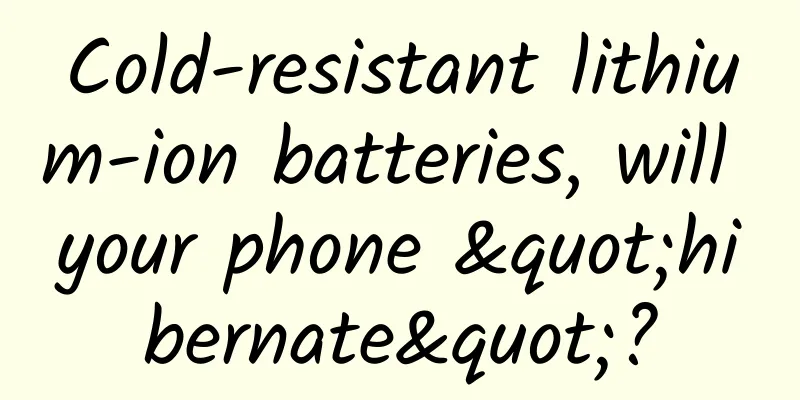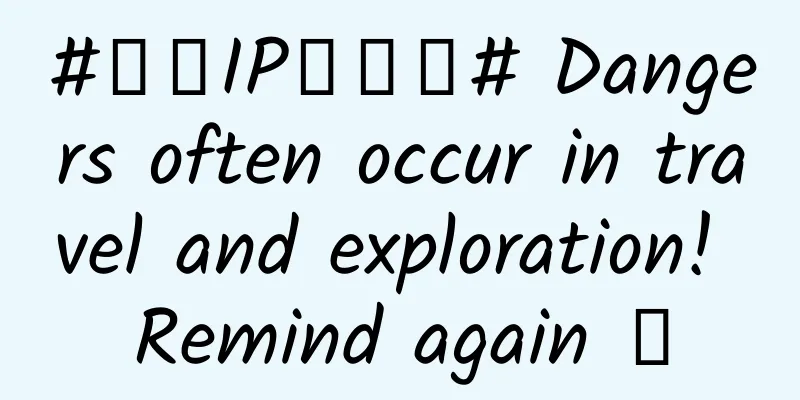Cold-resistant lithium-ion batteries, will your phone "hibernate"?

|
China Science and Technology News Network, December 30 (Xu Qiqi) Have you ever encountered this situation? In winter, you take your fully charged mobile phone out, but it runs out of power before you use it for a short time. This is because the chemical activity of lithium batteries will deteriorate in low temperature environments, and the amount of electricity that can be effectively used is lower than that in normal temperature environments. Recently, a research team composed of scientists from Tianjin University, Beijing Jiaotong University and the Chinese Academy of Sciences discovered a method to allow lithium-ion batteries to work stably in extremely cold environments. They can still be charged even at -35°C and can release nearly 100% of the battery power during the discharge process. Lithium battery is a secondary battery that mainly relies on the movement of lithium ions between the positive and negative electrodes to work. Secondary battery is rechargeable battery, also called storage battery. The main materials of lithium-ion battery are positive electrode, negative electrode, diaphragm and electrolyte, in addition to aluminum foil, copper foil, aluminum plastic film and so on. Lithium-ion batteries have the advantages of light weight, high voltage, high specific energy, fast charging, low self-discharge, long cycle life, good safety performance, etc. Currently, lithium-ion batteries are mainly used in electronic products, electric vehicles and aerospace electronic engineering. At the same time, lithium-ion batteries also have problems such as intolerance to overcharge, intolerance to over-discharge, possible short circuit, and capacity decay due to temperature, etc. Scientists are researching lithium-ion batteries that charge faster, are more cold-resistant, more heat-resistant, and have higher performance. In order to improve the performance of batteries in extremely cold conditions, scientists replaced the graphite anode in lithium-ion batteries with a cobalt-containing zeolite imidazolate framework, and the battery performance became better. Tests found that the anode with the replaced material can also be stably charged and discharged at a temperature of -20°C. When the temperature is slightly below freezing, the battery's storage capacity can reach 85.9% of that at normal room temperature. Even if the temperature drops to -35°C, the battery anode can be charged and release nearly 100% of the battery power. |
>>: Dots of Science | This is the rocket that helped Tianwen-1 land on Mars?
Recommend
When did the 2022 epidemic begin? When will it be unblocked? Attached the latest news
Recently, the local epidemic in Dongguan has been...
A hit copywriting must have a golden sentence: 6 tips for creating a golden sentence in copywriting
A copywriting that can touch people's hearts ...
Don’t overeat when you are hungry, and don’t drink when you are thirsty! Keep these eight words in mind for daily health care
In the Annotations of Ancient and Modern Medical ...
How to prevent posting on Tieba from being deleted (Tips on preventing posting in batches from being deleted on Tieba)
Now, posting in batches on Tieba requires a chang...
ALS is an incurable disease. How could Hawking live for more than 50 years despite suffering from this disease?
The scientific name of ALS is "amyotrophic l...
Why do 1 million people believe the Earth is flat?
A silent, blue planet. It has been 60 years since...
Is the Canada goldenrod, which is "despised by everyone," a flower or a weed?
Produced by: Science Popularization China Produce...
E-commerce operation full-year marketing activity plan layout
This sharing session is divided into three parts:...
What are the benefits of Douyin Blue V certification? The benefits of Douyin Blue V certification revealed
Why can Douyin Enterprise Account attract a large...
Will there be more extreme rainstorms in the future? Here is the explanation
Produced by: Science Popularization China Author:...
Don’t foreign workers use WeChat for Business, DingTalk, or Lark? Then what do they use?
After quickly seizing the domestic online collabo...
How to create a CocoaPods in Swift
You may be familiar with some well-known open sou...
White Wolf 2020.7.1 Silk Quilt Live Broadcast Unblocked Doujia Gameplay Detailed Explanation (Video Tutorial)
Course Description 1. Gameplay advantages: No acc...
5 tips for search advertising
This time I will share a bigger topic, how to do ...
From imitation to surpassing the original, 10 key factors of APP "plagiarism"
Imitation is the best way for many teams to get s...

![[Popular Science of Chinese Military Technology] Why are helicopter engines so different from those of fixed-wing aircraft?](/upload/images/67f21d2ca93eb.webp)







